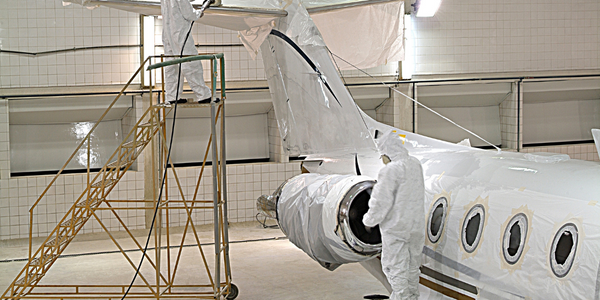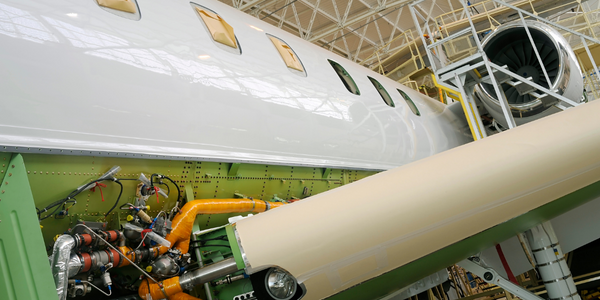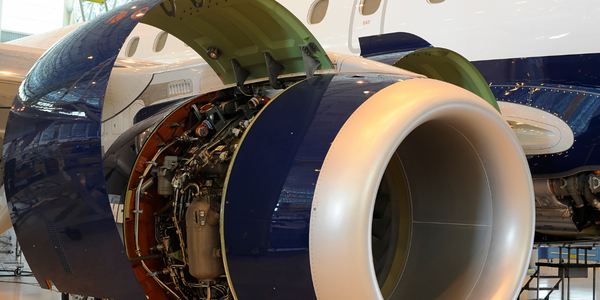Technology Category
- Sensors - Temperature Sensors
Applicable Industries
- Aerospace
- Education
Applicable Functions
- Logistics & Transportation
- Procurement
Use Cases
- Continuous Emission Monitoring Systems
- Supply Chain Visibility
About The Customer
VMware is a leading provider of multi-cloud services for all apps, enabling digital innovation with enterprise control. The company is committed to building a sustainable, equitable, and more secure future for all. VMware has set science-based targets for climate action, including a goal to engage suppliers so that 75% of its 3rd party spend will be with suppliers who have set their own science-based targets by 2025. The company recognizes the importance of reducing emissions in its purchased goods and services and sees this as the basis of its ROI calculation. VMware understands that acting on sustainability is not only crucial for the planet but also for preparing the company's business for the future.
The Challenge
Matthew Eaton, the Senior Manager for Responsible Sourcing at VMware, faced a significant challenge in integrating Environment, Social, and Governance (ESG) principles into the company's supply chain. Prior to his transition into this role, VMware lacked programs that prioritized suppliers with diversity, accessibility, or climate initiatives. The ESG team was attempting to get suppliers to disclose their emissions through the CDP Supply Chain, but the response rate was disappointingly low. Eaton recognized the need for a more centralized approach to supplier-facing ESG requests and a stronger commitment to sustainability, equity, and trust within the company's sourcing practices.
The Solution
Eaton launched the Responsible Sourcing program at VMware, which centralized all supplier-facing ESG requests. This new approach leveraged the existing relationships between the sourcing team and suppliers, leading to an improved response rate. Eaton emphasized the importance of aligning with VMware's corporate values and public commitments to climate action in discussions with suppliers. He also stressed the need for suppliers to understand the business value of sustainability and the increasing global regulation in this area. Eaton's approach was not to be an expert in sustainability, but rather to be confident about what he expected from suppliers and to lead with education and incentives rather than penalties. He also highlighted the direct return on investment (ROI) from reducing emissions, particularly for a large company like VMware, where about 90% of emissions come from the supply chain.
Operational Impact
Quantitative Benefit

Case Study missing?
Start adding your own!
Register with your work email and create a new case study profile for your business.
Related Case Studies.

Case Study
Airbus Soars with Wearable Technology
Building an Airbus aircraft involves complex manufacturing processes consisting of thousands of moving parts. Speed and accuracy are critical to business and competitive advantage. Improvements in both would have high impact on Airbus’ bottom line. Airbus wanted to help operators reduce the complexity of assembling cabin seats and decrease the time required to complete this task.

Case Study
Aircraft Predictive Maintenance and Workflow Optimization
First, aircraft manufacturer have trouble monitoring the health of aircraft systems with health prognostics and deliver predictive maintenance insights. Second, aircraft manufacturer wants a solution that can provide an in-context advisory and align job assignments to match technician experience and expertise.

Case Study
Aerospace & Defense Case Study Airbus
For the development of its new wide-body aircraft, Airbus needed to ensure quality and consistency across all internal and external stakeholders. Airbus had many challenges including a very aggressive development schedule and the need to ramp up production quickly to satisfy their delivery commitments. The lack of communication extended design time and introduced errors that drove up costs.

Case Study
Accelerate Production for Spirit AeroSystems
The manufacture and assembly of massive fuselage assemblies and other large structures generates a river of data. In fact, the bill of materials for a single fuselage alone can be millions of rows of data. In-house production processes and testing, as well as other manufacturers and customers created data flows that overwhelmed previous processes and information systems. Spirit’s customer base had grown substantially since their 2005 divestiture from Boeing, resulting in a $41 billion backlog of orders to fill. To address this backlog, meet increased customer demands and minimize additional capital investment, the company needed a way to improve throughput in the existing operational footprint. Spirit had a requirement from customers to increase fuselage production by 30%. To accomplish this goal, Spirit needed real-time information on its value chain and workflow. However, the two terabytes of data being pulled from their SAP ECC was unmanageable and overloaded their business warehouse. It had become time-consuming and difficult to pull aggregate data, disaggregate it for the needed information and then reassemble to create a report. During the 6-8 hours it took to build a report, another work shift (they run three per day) would have already taken place, thus the report content was out-of-date before it was ever delivered. As a result, supervisors often had to rely on manual efforts to provide charts, reports and analysis.

Case Study
Developing Smart Tools for the Airbus Factory
Manufacturing and assembly of aircraft, which involves tens of thousands of steps that must be followed by the operators, and a single mistake in the process could cost hundreds of thousands of dollars to fix, makes the room for error very small.








